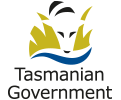Accessibility
Principles
Our community includes people with diverse communication needs. We must make sure that Government communications materials are accessible to all (see Policy statement 3). We must ensure that we meet the needs of people:
- with low levels of literacy
- with sensory or cognitive disabilities
- who rely on assistive technology
- from culturally and linguistically diverse communities
- with limited access to technology.
Particular attention should be given to ensuring the public can understand and use the information in the way it was intended.
Policy requirements
To maximise accessibility of information, agencies must:
- consider the accessibility of particular communication methods among target audiences when designing communications strategies (e.g. internet access in rural areas, podcast usage among seniors, text heavy messages to young people)
- use plain language, a consistent style and an appropriate tone to ensure target audiences (external and internal) can understand information being communicated in writing or verbally
- consider the need to deliver information in alternative formats (e.g. Braille, large print, via accredited interpreters or translators) where target audiences are from culturally and linguistically diverse communities or have diverse needs including low levels of literacy, sensory and cognitive disabilities or reliance on assistive technology
- ensure information published on websites is accessible to all Tasmanians in accordance with WCAG 2.0 level AA accessibility requirements
- ensure Tasmanian Government multimedia productions such as DVDs, animations and videos include captions or are accompanied by a transcript
- ensure audio productions such as podcasts or audio clips are accompanied by a transcript
- ensure Tasmanian Government television commercials include captions.
